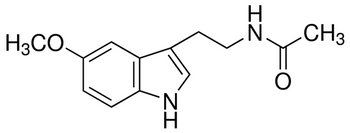Description
Luteolin ≥98% (TLC), powder, 10MG
Synonym: 3′,4′,5,7-Tetrahydroxyflavone
-
CAS Number 491-70-3
-
Empirical Formula (Hill Notation) C15H10O6
-
Molecular Weight 286.24
-
Beilstein/REAXYS Number 292084
-
EC Number 207-741-0
-
MDL number MFCD00017309
-
PubChem Substance ID 24896520

-
NACRES NA.77
Properties
| Related Categories | Antioxidant and Free Radical Scavengers, Antioxidants and Cytoprotectants, Aspalathus linearis (Rooibos tea), Bioactive Small Molecule Alphabetical Index, Bioactive Small Molecules, Cancer Metabolism, Cancer Research, Carthamus tinctorius (Safflower oil), Cell Biology, Cell Signaling and Neuroscience, Cell Stress, Chamaemelum nobile (Chamomile tea), Chemopreventive Agents, Fatty Acid Metabolism in Oncogenesis, Fatty Acid Synthase (FAS) Inhibitors, Flavonoids, Flavonols, and Flavanols, Ginkgo biloba, Hypericum perforatum (St John′s wort), L, Lavandula angustifolia (Lavendar tea), Linum usitatissimum (Flax), Metabolites, Inhibitors and Activators of Fatty Acid Metabolism, Nitric Oxide and Cell Stress, Nutrition Research, Ocimum basilicum (Basil), Phytochemicals by Chemical Classification, Phytochemicals by Plant (Food/Spice/Herb), Phytochemicals in Herbal Medicine or Traditional Chinese Medicine (TCM), Plantago ovata |
| Quality Level | 200 |
| assay | ≥98% (TLC) |
| form | powder |
| shelf life | 3 yr |
| color | yellow |
| mp | ~330 °C (lit.) |
| storage temp. | 2-8°C |
| SMILES string | Oc1cc(O)c2C(=O)C=C(Oc2c1)c3ccc(O)c(O)c3 |
| InChI | 1S/C15H10O6/c16-8-4-11(19)15-12(20)6-13(21-14(15)5-8)7-1-2-9(17)10(18)3-7/h1-6,16-19H |
| InChI key | IQPNAANSBPBGFQ-UHFFFAOYSA-N |
| Gene Information | human ... CDC2(983), CDK5(1020), CDK6(1021), CYP1A2(1544), GSK3A(2931) mouse ... Hexa(15211) rat ... Il4(287287), Tnf(24835) |
General description
Luteolin (3′,4′,5′,7′-tetrahydroxyflavone), a polyphenolic compound belongs to flavones subclass of flavonoids. Luteolin is commonly found in plants like celery, green peppers and chamomile tea.[1] Luteolin is one of the major flavonoids present in the flower extract of Hieracium pannosum Boiss,[3] aerial part of Dracocephalum kotschyi,[4] and contributes to the antioxidant potential of the plant.[3][4] Luteolin possesses antioxidant, anti-inflammatory properties,[4][6] and exerts anti-tumor potential primarily through apoptosis.[1][4] Luteolin exerts its apoptotic activity through downregulation of protein kinase B (Akt) pathway leading to caspase mediated apoptosis. Luteolin also resensitizes cancer cells to therapeutics.[1] Luteolin regulates the inflammatory genes and reduces nitric oxide and inflammatory cytokine production.[6] The anti-inflammatory property of luteolin implicates it as a potential therapeutic agent for the neurodegenerative disease like Alzheimer′s disease.[7] In plants, luteolin induces nodulation protein F (nodF) gene.[2][5]
Application
Luteolin has been used:
• to induce and elucidate the apoptotic pathway in renal cell carcinoma 786-O cells[1]
• as an additive in M9 minimal medium to induce nodF gene expression[2]
• as a reference standard to qualitatively and quantitatively analyse luteolin using reverse phase-high performance liquid chromatography with diode array detector (RP-HPLC-DAD)[3]
• as a reaction supplement for β-galactosidase assay[5]
• to elucidate the anti-inflammatory efficacy of luteolin in pseudorabies virus infected RAW264.7 cell line by measuring the anti-inflammatory mediators production and also cell viability and cytotoxicity assay[6]
Biochem/physiol Actions
Hydroxylated flavone derivative, a strong antioxidant and radical scavenger. Suggested to play a role in prevention of cancer, possibly via the inhibition of fatty acid synthase activity.







